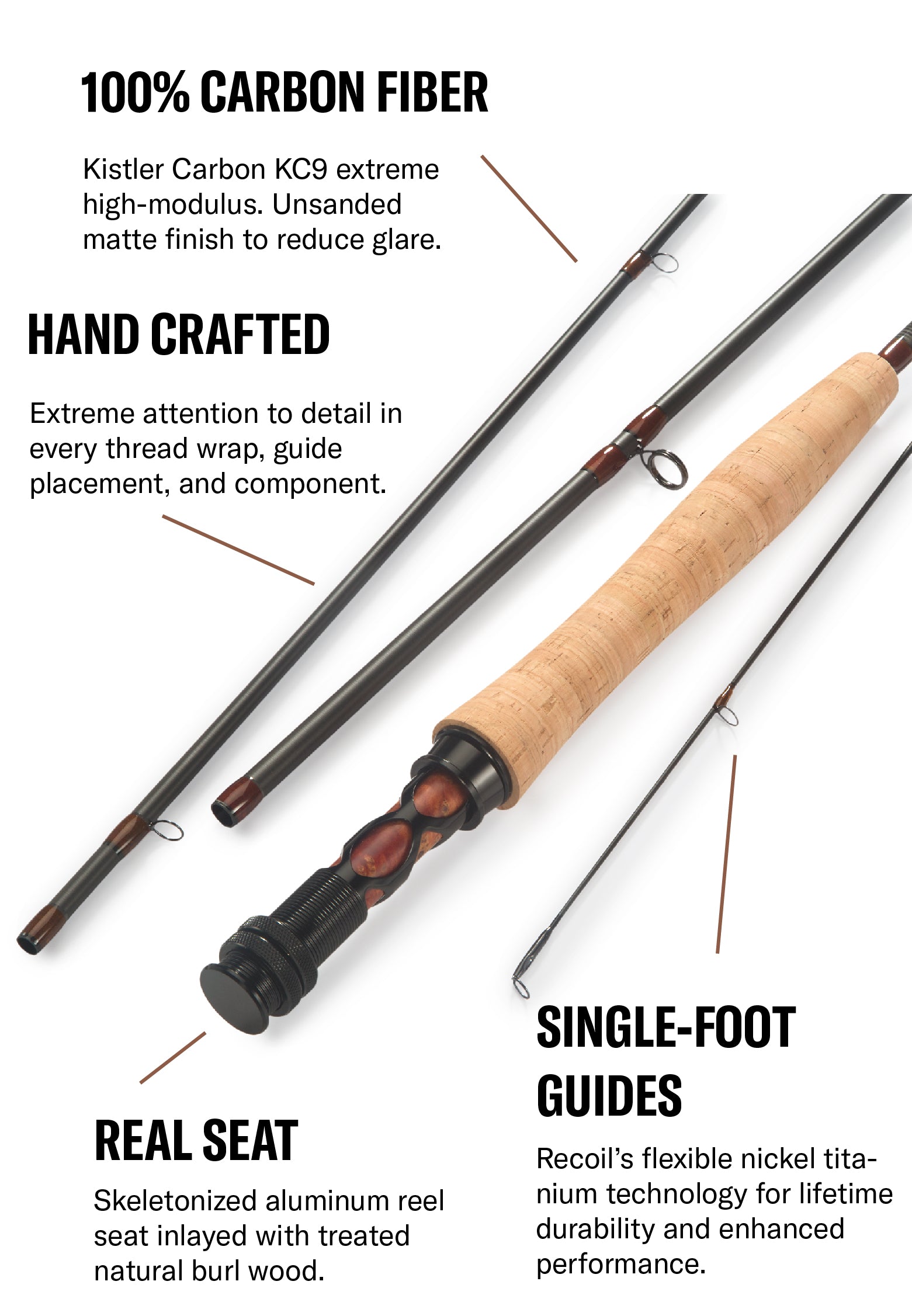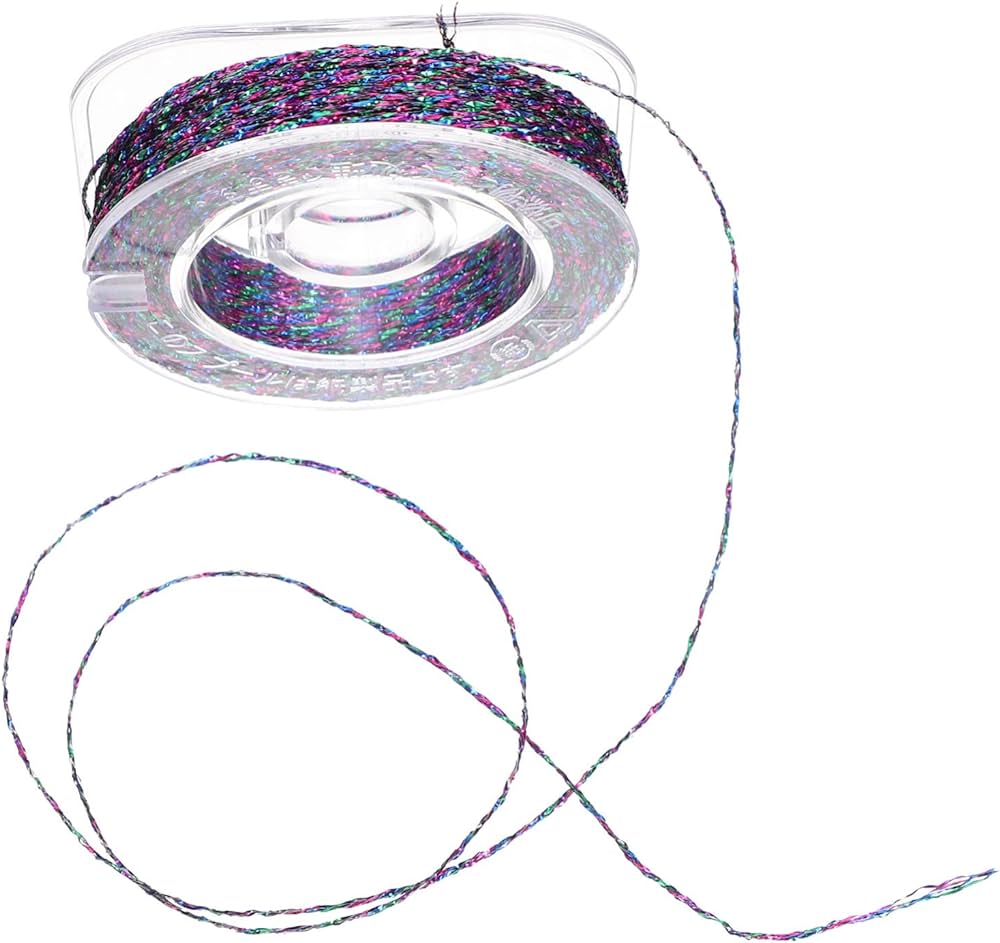To apply a durable finish to fishing rod wrapping, use high-quality rod varnish and evenly apply several thin coats. Allow each coat to dry thoroughly before applying the next.
Securing your fishing rod wraps with a durable finish is essential for both protection and performance. A reliable finish prevents the thread from becoming loose due to exposure to elements such as water, UV rays, and general wear and tear.
To get started, you’ll want to select the right varnish, which should offer strong adhesion, clarity, and flexibility. Preparing the rod surface properly before application is key, as it promotes better adherence of the varnish. This process typically requires patience and precision; ensuring each coat is thinly and evenly applied leads to a stronger finish without drips or sags. Regular maintenance and timely reapplication will extend the life and effectiveness of the finish, keeping your rod in pristine condition for many fishing adventures to come.

Credit: kistlerrods.com
The Importance Of A Durable Finish
A durable finish on fishing rod wrapping is vital. It guards against damage and keeps the rod looking great. Here we explore why and how to apply this essential layer.
Protection Against Wear And Tear
Fishing rods take a beating from the elements and usage. A durable finish:
- Prevents scratches, keeping your rod in top condition.
- Repels water, stopping rot and mildew.
- Shields from UV rays, avoiding line weakening.
Enhancing The Look Of Your Rod
A polished finish makes your rod stand out. A quality sealant brings out the wrapping’s colors and pattern, ensuring:
- Colors stay vibrant.
- Patterns remain clear.
- The rod’s surface shines.
Proper application involves cleaning the rod, applying the finish evenly, and allowing it to cure. Always follow the manufacturer’s instructions for the best results.
Types Of Fishing Rod Finishes
Every angler knows that durability is key for a great fishing experience. A well-applied finish on your fishing rod wrapping not only makes your rod look good but also protects it from the elements. Let’s dive into the types of fishing rod finishes that will keep your gear in top condition.
Epoxy
Epoxy is a popular choice for its strength and flexibility. This finish forms a hard, clear coating that’s resistant to water and scratches. Here’s how to use it:
- Clean the rod surface before applying.
- Mix resin and hardener accurately.
- Apply with a brush for an even coat.
- Let it cure for 24 hours.
Polyurethane
Polyurethane offers a durable finish with a shine. It’s easy to apply and comes in various sheens. To apply it right:
- Prepare the rod by sanding it lightly.
- Use a clean brush to apply thin layers.
- Allow each layer to dry fully.
- Apply multiple coats for best protection.
Varnish
Varnish is traditional and gives a classic, glossy finish. It has natural UV protection. For a perfect varnish application:
- Sand the wrapping for a smooth base.
- Use a soft brush to apply varnish.
- Apply several thin coats.
- Dry each coat before the next.
Preparing Your Workspace
Before diving into the art of applying a durable finish to your fishing rod wrapping, it’s essential to set up an appropriate workspace. A well-prepared area ensures a smoother process and a cleaner final product. Let’s walk through the steps for creating an ideal environment for your project.
Clean And Dust-free Area
Start with a spotless workspace. Any dust or particles can stick to the finish, creating a rough surface. It’s crucial to clean the area thoroughly before beginning. Follow these simple tips:
- Wipe down surfaces with a damp cloth.
- Allow the area to dry completely.
- Avoid working near open windows that can usher in dust.
Gathering Necessary Tools
Having the right tools on hand is just as important as the workspace itself. You’ll need a few essentials:
| Tool | Use |
|---|---|
| Epoxy or polyurethane finish | For creating a protective layer |
| Small brushes or foam applicators | For applying the finish evenly |
| Rotating rod dryer | For an even cure without drips |
Organize these tools within reach to streamline your workflow. Double-check to ensure you have everything needed before starting.
Prepping The Rod Wraps
Prepping the rod wraps is a crucial step before applying a finish. Proper preparation ensures a strong bond and a smooth, durable finish. Here’s how to set up your fishing rod wraps to last season after season.
Cleaning The Wrap
Start by removing all dirt and oils from the wraps. Use a soft cloth and rubbing alcohol to clean the surface thoroughly. Be gentle to avoid fraying. The goal is to create a clean surface for the finish to adhere to.
- Remove all grime: Use a lint-free cloth.
- Apply rubbing alcohol: Dampen cloth and wipe gently.
- Check for cleanliness: No residue means ready for the next step.
Sanding For Adhesion
Sanding creates a rough surface for better adhesion. Use fine-grit sandpaper and sand lightly in a single direction. After sanding, clean off any dust with a tack cloth or compressed air.
- Choose fine-grit sandpaper (220 or higher).
- Gently sand the wrap in one direction.
- Keep it light: Don’t press too hard.
- Use a tack cloth to remove sanding dust.
Mixing The Finish
When you treasure the art of customizing your fishing rod, applying a durable finish to your rod wrapping is essential. It not only protects the thread from wear and tear but also adds a touch of personal style to your gear. The key step in achieving the perfect durable finish lies in mixing the finish correctly.
Proper Ratios
Getting the right mix is crucial for a flawless finish. Most finishes consist of two components: the resin and the hardener. Follow these steps to ensure the proper ratios:
- Read the manufacturer’s instructions for the specific brand.
- Measure equal parts of resin and hardener.
- Use precise measuring tools for accurate results.
- Double-check your measurements before mixing.
Avoiding Bubbles
Nothing detracts from a smooth finish like bubbles. To ensure a bubble-free application, remember these tips:
- Stir the mixture slowly and evenly.
- Avoid whipping or fast movements that can introduce air.
- Utilize a bubble release agent if available.
- Let the mixture sit for a few minutes to allow bubbles to rise and pop.
- Gently apply the mixture to avoid creating new bubbles.
Patience and precision are your best tools for a perfect finish.

Credit: www.ubuy.co.in
Application Techniques
Proper application techniques are crucial for ensuring your fishing rod wrapping stands the test of time and the elements. Here, we’ll dive into simple yet effective methods to apply a durable finish that will protect your handiwork and keep it looking great for years to come.
Using A Brush Or Sponge
Selecting the right tool is the first step to a flawless finish.
- Use a high-quality brush or sponge to prevent bristle loss or uneven texture.
- Dip the brush lightly into the finish, ensuring it’s not dripping.
- Apply in thin layers, brushing along the length of the wrapping.
Taking care to avoid bubbles, work the finish into the thread carefully.
Achieving Even Coats
Consistency is key for an enduring finish.
- Inspect the rod under good light to catch any missed spots.
- Allow adequate drying time between coats.
- Apply a second or third coat as needed for full coverage.
Remember, patience pays off with smoother, even layers that last.
Curing The Finish
Giving your fishing rod wrapping a durable finish is crucial for protection and performance. The curing process is paramount to ensure longevity and strength. Adequate curing time, ideal conditions, and proper application techniques are essential for a flawless and tenacious end result.
Ideal Temperature And Humidity
To achieve the best curing results, maintain a workspace with consistent temperature and humidity levels. The optimal temperature range is between 70 to 85 degrees Fahrenheit, with humidity levels at 50 to 70 percent. Avoid extreme conditions, which can cause the finish to dry improperly, leading to defects.
Time Required For Drying
Curing is not a rush job. Allow a minimum of 24 hours for the finish to set before handling. For full cure, give it at least 72 hours under the right conditions. Keep in mind that thicker applications may necessitate longer drying times.
| Application Method | Temperature | Humidity | Drying Time |
|---|---|---|---|
| Brush | 70-85°F | 50-70% | 24-72 hours |
| Spray | 70-85°F | 50-70% | 24-72 hours |
- Ensure workspace is dust-free.
- Use a humidifier or dehumidifier to regulate air moisture.
- Apply finish in thin, even coats.
Remember, patience during the curing process guarantees a smooth and robust fishing rod wrapping finish.

Credit: www.facebook.com
Final Inspection And Touch-ups
The last step in sealing your fishing rod wrapping is crucial. A detailed final inspection ensures that your wrap looks great and lasts longer. Here, you’ll learn how to blend skills with a keen eye to bring out the best in your fishing rod wraps.
Checking For Imperfections
Every inch of your rod deserves attention. You must scrutinize your wrap under good light. Rotate the fishing rod slowly. Look for bubbles, debris, or uneven coating. Use a magnifier for small details. If you spot issues, note them down for touch-ups.
Applying Additional Coats If Necessary
Minor flaws may require more finish. Apply thin, even coats to the area. Wait for the first coat to dry before adding another. This ensures a strong, clear seal. Keep a light hand to avoid drips or buildup.
Following these steps leaves your fishing rod wrapping flawless and robust. Diligence in the final stages rewards you with a rod that stands the test of time and the elements.
Frequently Asked Questions On How Do You Apply A Durable Finish To Your Fishing Rod Wrapping?
What Is Rod Wrapping?
Rod wrapping refers to the process of securing guides onto a fishing rod with thread, which is then coated with a finish for protection.
How To Choose A Finish For Rod Wrapping?
Select a durable, waterproof, and flexible finish to protect your wrapping against the elements and regular use. Epoxy and urethane are popular choices.
What Is The Best Way To Apply Rod Finish?
The best way to apply rod finish is with a thin brush or spatula, evenly distributing it over the thread wraps. Rotating the rod helps prevent drips and sags.
Can You Use Epoxy For Fishing Rod Finish?
Yes, epoxy is a popular choice for fishing rod finishes due to its strong adhesive properties, durability, and excellent moisture resistance.
Conclusion
Securing a long-lasting finish for your fishing rod wraps requires patience and precision. Opt for quality sealants and allow ample curing time. Remember, regular maintenance ensures your efforts endure. Tackle your next fishing adventure with confidence, knowing your rod is well-protected.
Tight lines and happy casting!

